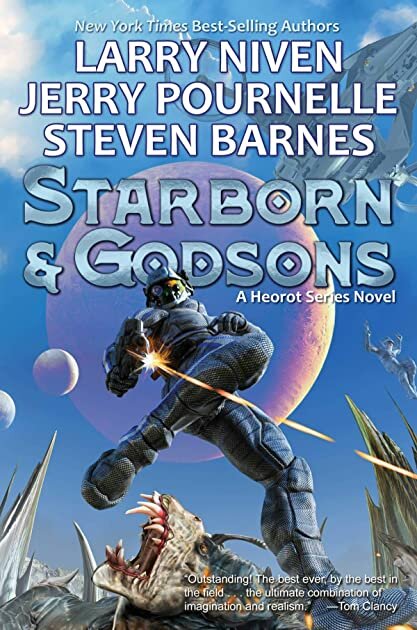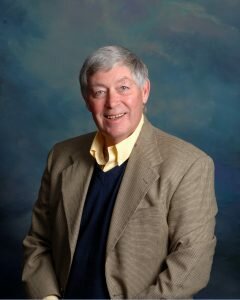Just this past week, I finished Starborn & Godsons by Larry Niven, Jerry Pournelle, and Steven Barnes, the third novel in a trilogy about Earth’s first interstellar colony, a planet called Avalon orbiting Tau Ceti.
It has the distinction of being the next-to-last original work published over the byline of the late Dr. Jerry E. Pournelle. (The last, Mamelukes, which was nearly completed by Pournelle before his death last year, and which was finished by David Weber and Pournelle’s son, Phillip, will appear later this year.)
I would have bought the novel for that reason alone. I’ve been a Pournelle fan for years, and was a long-time subscriber to his blog, Chaos Manor. Political scientist, national security consultant, essayist, practical IT columnist, editor, blogger, space exploration enthusiast – he was all of these things, but is best known for his science fiction novels, many written together with his long-time friend Niven.
He and Niven produced best-sellers in The Mote in God’s Eye, Lucifer’s Hammer, and Footfall. With Barnes, they wrote the Heorot Series, beginning with Legacy of Heorot, followed by Beowulf’s Children, and now Starborn & Godsons. On his own, and sometimes in collaboration with others like Roland Green and S.M. Stirling, he produced a number of other novels. In collaboration with John F. Carr, he turned out numerous anthologies. If he was not the sole inventor of military science fiction, he was one of its masters. Quite an impressive body of work.
Niven and Barnes both wrote forewords for Starborn. These alone are worth the price of the book. Pournelle’s health had declined over the decade prior to his death, including suffering a brain tumor and invasion radiation therapy, so he was not able to contribute much to the actual drafting of the novel. But he was deeply involved in the outlining, the plotting, and the editing. Barnes’ essay, in particular, is a moving tribute to Pournelle, who lost his ability to pound out copy, but never his intellect.
The reader of the present novel, if he has read other works by the three, can see Pournelle’s hand in the plot, just as he can see Niven’s ability to conceive a plausible but totally alien sentient species and Barnes’ personalization of the characters. Starborn & Godsons is a worthy successor to the first two novels, and carries the story of the Avalon colony forward quite nicely.
In the first novel, Legacy, the colony is off to a good start, when the colonists encounter an alien life form, which they dub “Grendels” after the monster in Beowulf, which they do not understand and almost destroy the colony. The Grendels are creature every bit as frightening, and a great deal more plausible, than the aliens in the Alien and Predator films. But the novel is much more than a creature story. The conflicts, loves, and sorrow of the colonists make the story vivid and compelling.
Beowulf’s Children is set a generation later. The colonists, now bereft of a great deal of the technical infrastructure destroyed by the Grendela, have survived, and struggle to make do with what they have and bring up a new generation on a strange and sometimes hostile world. These are the Starborn.
In the latest novel, another starship arrives from Earth, bearing the Godsons, members of a cult that fanatically believes the human race is destined to be masters of the galaxy. As one might expect, the original colonists do not share this ideology. At the same time, they desperately need the technology the newcomers bring, and, as humans do, some of the Starborn and Godsons form emotional attachments in spite of their differences.
In the process of working things out, a colonist dies. One of the Starborn, who has reason to hold a grudge against the deceased, is the subject of a murder accusation. The Colonists dismiss the charges as inconclusive, but the Godsons are not satisfied, hold their own trial, and convict and imprison him.
The accused, Cadmann Sikes, is sprung by his Godson lover, Trudy, with the aid of an assortment of Starborn and Godson defectors. The chase is on. In its excitement, the human settlers find that they share the planet with another sentient race that was under their noses all along.
Starborn & Godsons is a must read for the authors’ fans. For others, I recommend starting with Legacy and reading the series in order. To anyone who likes “hard” science fiction with plenty of human interest, it will be a worthwhile experience.



Comments
Leave a Reply